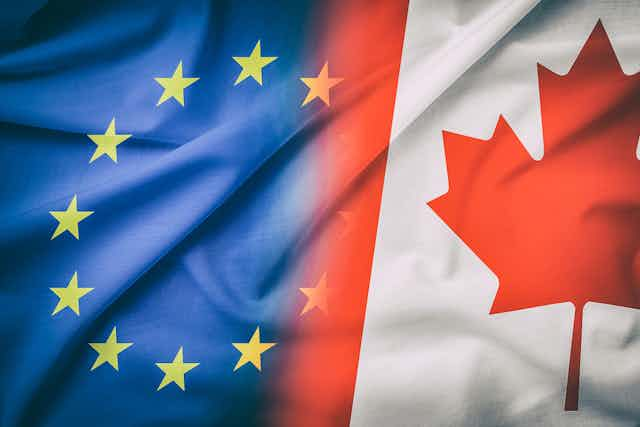Canada’s trade deal with the EU, CETA, appears to be back on track. It has overcome its latest stumbling block, a veto by the Belgian region of Wallonia, and must now be approved by the other 27 EU members.
CETA’s rollercoaster ride will no doubt be used by both Brexiteers and Remainers to support their pre-existing narratives. For Brexiteers, the EU’s struggle to agree a trade deal with Canada will be further proof that the UK is better off outside the EU. For those who oppose Britain leaving the EU, difficulties in finalising the Canada-EU trade agreement will likely be seen as proof of how difficult the UK will find it to negotiate a satisfactory trade agreement with the rest of the EU within the two-year time window that would follow Article 50 notification.
We have a different view. Based on international relations theory, we interpret the EU’s dealing with Canada as making it clear to Britain that negotiating a free trade agreement will be very long and difficult. It has raised the expected price of Brexit. CETA and the Canadian Trade Minister are merely collateral damage.
Sending signals
There is a vast literature in international relations on the themes of deterrence and signalling. This refers to how states interact and try to negotiate their interests.
The most famous of these is “mutually assured destruction”. This was the theory developed in the Cold War that the threat of a nuclear strike was enough to prevent the other side from striking, as it would lead to the annihilation of both sides. Although this particular theory of deterrence is not terribly relevant to understanding trade negotiations between capitalist democracies, a softer form of deterrence and signalling is at work.

Credible commitments are a crucial part of deterrence. This is not to say that the European Commission in Brussels instructed the regional government of Wallonia to put up resistance to CETA, with a view to deterring the UK from leaving the single market. But the timing of its decision to declare CETA a so-called “mixed agreement” – and give Wallonia the power to reject the deal – supports the idea that it was trying to signal to the British government that negotiating a post-Brexit EU-UK trade deal would be far from straightforward. And, in so doing, it may be hoping to deter the UK from exiting the single market or the EU.
Had the EU opted for an unmixed agreement, it would have only required the approval of the EU parliament, a process involving a far smaller number of potential vetoes. This was highly debated throughout the first half of 2016. Then, on July 5, not long after the UK’s referendum vote, a press release from Jean-Claude Junker, president of the European Commission, announced that the CETA agreement would be considered a “mixed one” and therefore require the approval of all EU nations – and, as in the case of Belgium, sub-national legislatures as well.
In choosing to declare CETA to be a mixed agreement, the European Commission must have been aware that many of the veto points across the continent were controlled by politicians increasingly aware of the rise of anti-globalisation and anti-trade sentiment in public opinion throughout the developed world.

This is something that Canada’s international trade minister, Chrystia Freeland, has been aware of. She travelled extensively around Europe, meeting with various people with influence or control over these veto points. For instance, she attended a conference of Germany’s left-leaning, Social Democratic Party, addressing their concerns and getting them to greenlight the agreement.
Messaging London, not Ottawa
Some Canadians were, of course, somewhat taken aback by the European Commission’s eleventh hour decision to change the ratification procedure, especially since Canada’s federal government had long ago completed the arduous task of securing consent to CETA from Canada’s own sub-national governments, the provinces. Two highly respected Canadian academics, Armand de Mestral and Markus Gehrin, declared that the “EU should have told Canada years ago it was moving the CETA goal posts” by deeming the agreement a mixed one.
What some observers in Canada may have been missing was that the very recent decision to declare CETA a mixed agreement was about sending a message to London, not Ottawa. In our view, the Canadians shouldn’t take the aftermath of the European Commission’s July decision personally – it’s not about them, it’s really about Brexit.
So how should the UK respond to this signal that’s been sent up by the European Commission? It is clear that, going forward, any trade agreement between the UK and the EU will be a mixed agreement. Since the UK appears to be intent on leaving the EU and the single market, it may need to start thinking about how it can address the concerns of veto holders throughout the EU. At the very least, a Chrystia Freeland-style charm offensive may be in order – although this may strain the human resources of the UK’s brand new department for exiting the European Union.

